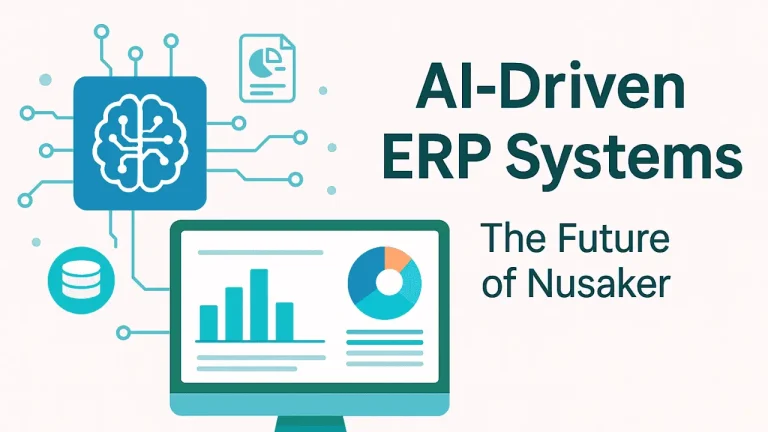You click a Google Docs link, and suddenly, the URL says __pii_deleted__. No explanation, no clear error, just that. You might wonder: Did Google delete my file? Did I do something wrong?

No worries. It’s not necessarily your fault, and your document might not be gone.
The term __pii_deleted__ appears when Google’s systems detect or sanitize Personally Identifiable Information (PII) in shared URLs. This could include a name, email address, phone number, or anything Google considers sensitive per their Privacy Policy.
Real user quote (Reddit):
“I clicked an old doc link from my team chat, and it opened a URL with __pii_deleted__ in it. It freaked me out because I thought the doc was removed — but it still opened when I logged into the right account.”
So, what’s happening isn’t necessarily deletion. In many cases, Google modifies the visible link or indexing pattern to protect privacy, especially if it was previously shared publicly or involved in content flagged for policy violations.
It’s less of a glitch and more of a protective redaction. Basically, it’s a part of Google’s increasing efforts to comply with privacy regulations and protect users from unintentionally exposing sensitive details.
Is My Google Doc Really Deleted — Or Just Hidden?
Here’s the good news: just because a Google Docs link shows __pii_deleted__, doesn’t mean your file is gone. It may be inaccessible to you, but it could still be sitting safely in the owner’s Drive.
Think of it like trying to open a door with the wrong key. The room is there, but you can’t get in. Most commonly, this issue is tied to one of three scenarios:
- The document was moved to Trash or permanently deleted.
- You don’t have access because of permission changes.
- Google removed the original link due to privacy concerns and replaced part of it with __pii_deleted__.
What Happens When a Google Doc is Deleted vs Trashed
When a Google Doc is trashed, the owner still has 30 days (or more in Workspace accounts) to restore it from the Trash folder.
If it’s permanently deleted, and no backup exists, the file is gone unless recovered by a Workspace admin.
But if you’re seeing __pii_deleted__, it’s often not about deletion at all. It’s usually about how the link was structured — maybe it once contained an email or username that’s now been scrubbed.
Example: If a public doc URL once included an editor’s email, Google might replace it with __pii_deleted__ to avoid leaking private identity info.
What It Means If the Link Still Opens for Some Users
Here’s a key test: if the link still works for the document owner or someone with edit access, but not for you, it’s a permissions issue, not deletion.
Try these steps:
- Log in to the correct Google account.
- Ask the doc owner if it’s still active and shared.
- Open the document using “Shared with me” in Google Drive.
In some cases, a document might still be visible to those who had previous access. But when Google replaces PII in a link, the new link may not work for others unless it’s reshared with proper permissions.
Tip: Don’t assume the file is gone. First, check your account, contact the owner, or view your Drive’s Trash or “Shared with me” folder.
How to Troubleshoot a __pii_deleted__ Google Docs Link
Just because a Google Docs link says __pii_deleted__ doesn’t mean the document is gone. Think of it like a locked door. You may still have access, but you’re trying the wrong key or standing at the wrong entrance.
Here’s a step-by-step guide to help you figure out what’s really going on and what you can do about it.
Step 1: Check if You’re Logged In to the Right Google Account
It may sound obvious, but many access issues start with the wrong login. If you’re using a personal Gmail but the doc was shared with your work account — or vice versa, Google Docs will block access or redirect you.
Do this:
- Open an Incognito Window (or private browser tab)
- Visit Google.com → Log in with the account the doc was shared with
- Paste the document link again
“Turns out I was logged into my burner Gmail, not my school email. No wonder it looked deleted.” – Reddit user, r/techsupport
If the doc opens after this, it’s a permissions mismatch, not a deletion.
Step 2: Check Google Drive Trash (If You’re the Owner)
If you’re the original owner of the document, there’s a good chance the file was moved to Trash, either accidentally or by someone with editing access.
Here’s how to check:
- Go to drive.google.com
- On the left sidebar, click Trash (Bin)
- Use the search bar to filter by keywords, dates, or file types
- If you see the doc, right-click → Restore
Files in Trash stay there for 30 days by default — unless permanently deleted earlier. In Workspace/Business accounts, admins can restore files up to 25 days after deletion. (source)
Step 3: Review Sharing Settings and Access Permissions
Sometimes, __pii_deleted__ appears when Google redacts sensitive elements in a link — but the doc itself is intact and still privately shared.
Here’s how to verify access:
- Ask the document owner to open the doc and go to:
File → Share → “People with access” - Check if your email or domain is listed
- If not, request access or ask the owner to re-share it
Also, look for unusual settings like “Viewer expires after X days” or “Restricted” access, which could block users even if they had the link earlier.
Example: A recruiter shared a public resume template. Later, they changed it to “Only people in my org.” Users who had the old link now see a __pii_deleted__ placeholder or access error.
How to Recover Access to a Google Doc Showing __pii_deleted__
Seeing __pii_deleted__ in a Google Docs link can feel like the document vanished into thin air. But don’t panic. In most cases, the content is still there. You just need the right steps to bring it back.
Here’s how to fix it fast, depending on your role (owner, editor, or viewer):
1. Restore the Document from Trash (If You’re the Owner)
If you created or owned the document, start by checking your Google Drive Trash.
Steps:
- Go to Google Drive Trash
- Look for the document title
- Right-click and choose Restore
- Re-share it with collaborators if necessary
Note: Files stay in Trash for 30 days. After that, they’re auto-deleted — unless you’re using a Google Workspace account, where admins may restore content within 25 days of permanent deletion. (Google Help)
2. Ask the Document Owner to Re-Share It
If you don’t own the document and it shows __pii_deleted__, the best move is to reach out to the original owner.
Ask them to:
- Open the doc in their Drive
- Click “Share”
- Add your email with Viewer, Commenter, or Editor access
- Confirm the link setting is “Anyone with the link” only if it’s meant to be public
“My colleague reshared the doc with me directly after I sent a screenshot of the broken link. The file wasn’t deleted — just locked down.” – r/GoogleDocs user
3. Recreate and Re-Share the Document (If Needed)
If access can’t be restored and you don’t have a backup, consider asking the owner to duplicate the document:
Steps for the owner:
- Open Google Docs
- Click File > Make a Copy
- Rename and re-share the new version
- Use safer naming conventions (avoid PII in title)
This also gives you the chance to clean up sensitive information that may have triggered link redaction in the first place.
4. What to Do If It’s Permanently Deleted
If the document is:
- Not in Trash
- Not in “Shared with me”
- Can’t be restored by the owner
- No backup exists
…it’s likely permanently deleted.
Options:
- Check email for any prior file attachments or downloads
- Ask collaborators if they saved a copy
- Search your local files or synced Google Drive folder
- Rebuild the document from past emails or meeting notes
If you’re in a business/edu account, your admin may still recover it (see below).
How to Contact Google Workspace Support (If Applicable)
For business or education users under Google Workspace:
Admins can:
- Log into admin.google.com
- Go to Users > Select user > Restore data
- Choose Drive, set a date range, and recover deleted files (within 25 days)
Alternatively, use the Google Admin Help Portal to file a recovery request.
When You’ll Need to Start from Scratch
If recovery isn’t possible, it’s time to rebuild. Here’s what to do:
- Draft a new Google Doc
- Recreate structure/content from memory, emails, or collaborators
- Use version control moving forward (enable Version History)
- Consider local backups or saving to Drive + PDF for redundancy
This is also the perfect time to review your file sharing and privacy habits to avoid future loss.
Pro Tip: Never put PII like your email or ID in the file name or URL. Google’s systems may flag or redact this automatically.
How to Prevent __pii_deleted__ Errors in the Future
You can’t control Google’s redaction systems, but you can avoid triggering them in the first place. If you regularly share Google Docs, it’s smart to treat every shared file like a potential public post.
Here’s how to future-proof your Docs from unexpected __pii_deleted__ flags and loss of access.
The Golden Rule: Don’t Put Sensitive Info in File Names
- It’s tempting to name your doc something like:
John_Smith_PayStub_Q2_2025
[email protected]
But these filenames often appear in shared URLs, previews, and even Google’s search index — which can lead to automatic PII redaction or access restrictions.
Instead:
- Use neutral, non-identifying titles (e.g., Q2_Payroll_Report or Client_Template_2025)
- Avoid names, emails, phone numbers, addresses, or sensitive keywords
Google’s support article on protecting sensitive content warns that file metadata may be surfaced unintentionally. Play it safe from the start.
When to Use “Anyone With Link” vs. Private Sharing
This setting is deceptively powerful and risky.
The “Anyone with the link” option means anyone literally holding the link can open your document, even if it’s reshared, indexed, or cached by bots.
Use it only when the content is meant to be public, like:
- Event flyers
- Resume templates
- Team resources you don’t mind circulating
For everything else, especially anything with internal, personal, or client dat, use:
- “Restricted” sharing
- Share with specific emails only
- Enable Viewer expiration or remove access after projects wrap up
“We posted a Google Doc for community signups with ‘anyone with link’… weeks later, it was popping up in search. Lesson learned.”
— Forum user, DocsPrivacyTips
Bonus: Backup & Permission Audit Strategies
To keep your documents secure and accessible:
- Run regular permission audits
Use the Google Drive Sharing Checker to review who has access to each file. - Back up important docs
Use Google Takeout to export your entire Drive, or manually back up key files to an external drive. - Set calendar reminders
Quarterly reviews help prevent file rot, privacy drift, and accidental over-sharing.
Conclusion:
If you landed on a link showing __pii_deleted__, it doesn’t always mean your document is gone. In fact, in most cases, the content is still safe. What’s really happening is that Google is protecting personal data behind the scenes.
















